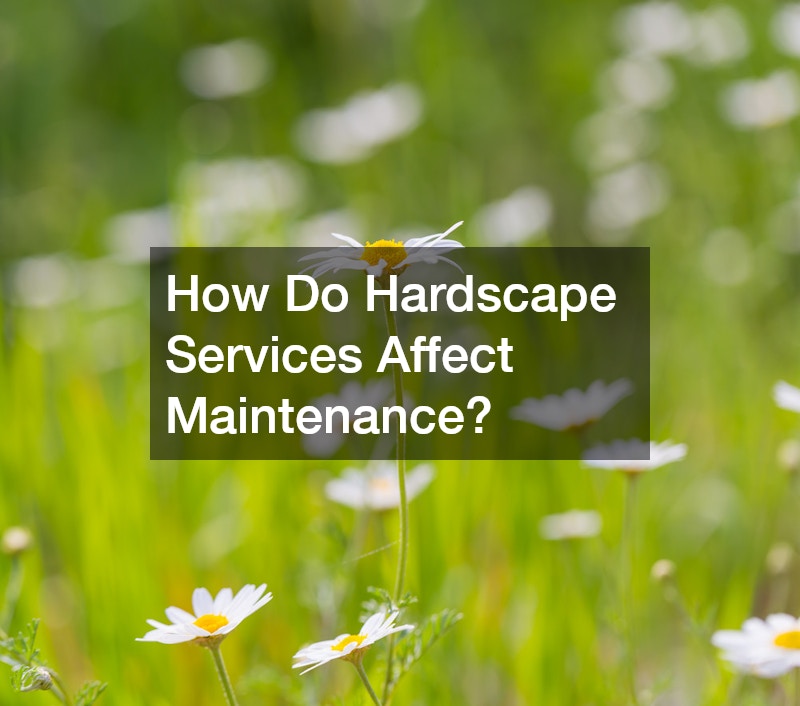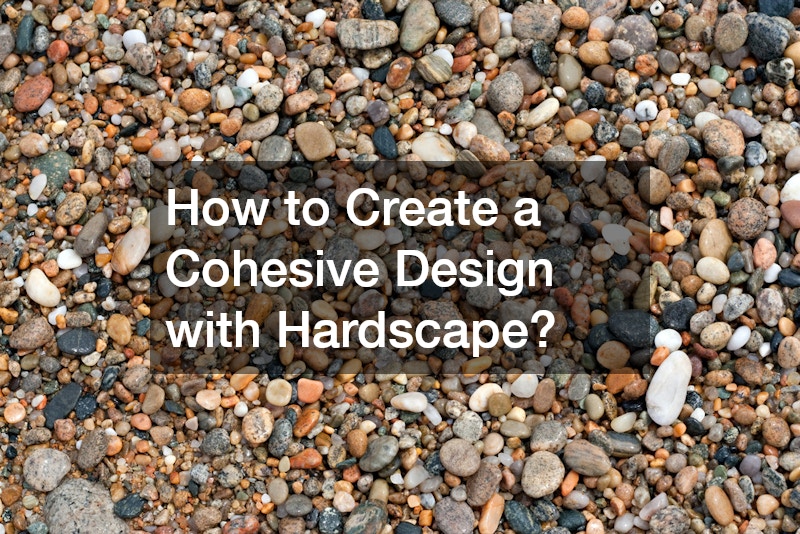
Investing in landscape and hardscape services can significantly enhance your property’s value, both in aesthetic appeal and market worth. These improvements not only beautify your outdoor spaces but also provide functional benefits that potential buyers appreciate. With the right strategies, such as incorporating professional landscaping and hardscaping elements, homeowners can create an inviting atmosphere that captures interest and elevates property values. Understanding how these services work together is key to maximizing your investment.
What is a Hardscape Service?
Definition and Scope
Hardscape services refer to the non-plant elements of landscaping, including features like patios, walkways, retaining walls, and more. This scope can involve using materials such as stone, concrete, and brick to create durable, functional outdoor spaces. These elements are integral to landscaping, providing structure and usability. A professional hardscape service ensures that every feature is well-constructed, aesthetically pleasing, and effectively integrated with the surrounding landscape, which can ultimately enhance your property’s overall appeal.
Common Hardscape Elements
Common elements of hardscape services include patios, walkways, and driveways. Other features, such as decks, fences, and outdoor kitchens, also play a significant role. For instance, vinyl fences can add privacy while enhancing curb appeal. Each of these elements serves a functional purpose, such as improving accessibility or creating defined spaces for relaxation or entertainment. By focusing on these features, a hardscape service can transform a plain yard into a visually appealing and functional area that potential buyers will love.
Differences Between Hardscape and Landscape
While hardscape focuses on solid structures and materials, landscaping emphasizes living elements like plants, trees, and lawns. The two work in tandem to create a cohesive outdoor environment. For example, an arborist may aerate the grass and select the right trees to complement a stone pathway installed by a hardscape service. Understanding the differences between these two disciplines is crucial for homeowners looking to maximize their property’s value. Each plays a unique role in creating an appealing outdoor space, so both must be carefully considered in any enhancement project.

How Does Hardscape Service Enhance Curb Appeal?
Visual Impact on Property Appearance
Hardscape services can dramatically improve the visual appeal of a property. A well-designed patio or walkway can serve as a focal point, drawing the eye and creating a sense of elegance. For example, adding landscape lighting can further enhance these features by illuminating them at night, making the property inviting even after sunset. The visual impact of hardscaping elements, like a beautiful stone pathway or a well-placed hot tub, contributes to a welcoming atmosphere that potential buyers find appealing.
Examples of High-Impact Hardscape Features
High-impact hardscape features include fire pits, outdoor kitchens, and elaborate stone walls. These elements not only beautify the space but also create functional areas for entertaining guests or enjoying quiet evenings. An excavator rental may be necessary for large projects like grading for a new patio. Incorporating these features into your landscaping can make a significant difference in how potential buyers perceive your property. The more inviting and functional your outdoor spaces, the higher your property value can climb.
Can Hardscape Services Add Functionality?
Creating Usable Outdoor Living Spaces
One of the primary benefits of hardscape services is the creation of usable outdoor living spaces. Patios, decks, and outdoor kitchens extend your home’s living area, making it perfect for entertaining or family gatherings. A well-designed space can accommodate a dining table or even a hot tub, enhancing the functionality of your property. By strategically planning these areas, homeowners can create multifunctional spaces that appeal to a wide range of buyers, thus increasing property value.
Enhancing Accessibility and Safety
In addition to aesthetics, hardscaping can improve accessibility and safety. Features like smooth walkways and ramps provide easier access, particularly for families with children or elderly relatives. Using proper materials can also reduce slip hazards. Engaging a landscape lighting company to illuminate these paths at night can further enhance safety, making your property more attractive to potential buyers. By focusing on these practical aspects, hardscape services not only beautify but also create a safer environment for future occupants.
Maximizing Space Utilization
Effective hardscape services can help maximize the usability of your outdoor space. By using an excavator rental for larger projects, homeowners can reshape their yards to create defined areas for relaxation, play, or gardening. Clever use of materials and design can make even smaller yards feel more spacious and inviting. For example, incorporating vertical gardens or tiered levels can enhance the visual appeal and functionality of a space. This strategic use of hardscaping can lead to a higher property value by offering potential buyers more usable space.
What is the ROI of Investing in Hardscape Services?
Understanding Value Addition Through Hardscaping
The return on investment (ROI) from hardscape services can be significant. Studies have shown that homeowners can recoup up to 70% of their hardscaping costs when they sell their homes. This is particularly true for features that enhance outdoor living spaces, such as patios and fire pits. Additionally, the quality of materials and craftsmanship plays a crucial role in determining how much value these additions will bring. Investing wisely in hardscape services can thus lead to substantial financial returns.
Economic Impact on Property Resale
Hardscaping can positively impact the resale value of your property. Buyers are increasingly looking for homes with functional outdoor spaces. According to real estate experts, properties with well-designed hardscaping elements can sell for 15% to 20% more than comparable homes without them. This increase in value makes hardscaping a smart investment for homeowners looking to sell in the future. By enhancing your outdoor spaces, you position your property as a desirable option in a competitive market.
How to Create a Cohesive Design with Hardscape?
Integrating Hardscape with Existing Landscape
Creating a cohesive design involves seamlessly integrating hardscape with existing landscaping elements. This requires careful planning and consideration of colors, textures, and materials. For example, using natural stone that complements your home’s architecture can create harmony between the hardscape and the landscape. Consulting with professionals, such as landscape architects or an arborist, can help ensure that your design is visually appealing and functional. This integration enhances the overall aesthetic and increases the property value.
Choosing the Right Materials
Selecting the right materials is crucial for both aesthetics and longevity. Homeowners should consider the climate and maintenance requirements when choosing materials. Natural stones, for instance, offer durability and beauty but may require more upkeep compared to synthetic options. Additionally, features like vinyl fences can provide a clean look with minimal maintenance. Ultimately, the materials chosen should align with the desired style and functional needs, contributing to a cohesive and valuable outdoor space.
Design Principles for Harmony and Flow
Incorporating design principles that promote harmony and flow is essential in creating an inviting outdoor environment. Using a balanced layout with symmetry can make spaces feel more organized. Additionally, designing pathways that guide visitors through the landscape can enhance the flow and usability of the outdoor area. Collaborating with professionals, such as a landscape lighting company, can also ensure that your design looks great day and night. Thoughtful planning in these areas can significantly impact the perceived value of your property.
What Materials Are Commonly Used in Hardscape Services?
Natural vs. Synthetic Materials
Hardscape services typically utilize a variety of materials, both natural and synthetic. Natural materials like stone and brick offer a timeless appeal, while synthetic materials, such as concrete pavers, can provide versatility and durability. Each type of material has its pros and cons; for instance, natural stone may require more maintenance, while synthetic options can be easier to install and replace. Homeowners should weigh these factors when planning their hardscape projects to ensure the best outcomes.
Pros and Cons of Different Hardscape Materials
Understanding the pros and cons of various materials is essential for effective planning. Natural stone offers durability and a unique appearance, but it can be more expensive and difficult to install. On the other hand, concrete is often more affordable and easier to work with but may lack the aesthetic appeal of natural options. Balancing these factors with your budget and desired aesthetic is critical. Consulting with experienced builders can provide insight into the best choices for your specific project.

How Do Hardscape Services Affect Maintenance?
Long-Term Maintenance Considerations
Maintenance is a crucial factor when investing in hardscape services. Some materials require more upkeep than others, impacting long-term costs. For instance, natural stone may need sealing, while concrete can crack over time if not properly maintained. Homeowners should consider their willingness and ability to perform regular maintenance when selecting materials and features. By choosing durable options and consulting with professionals, homeowners can minimize maintenance challenges and ensure the longevity of their hardscape investments.
Reducing Maintenance Effort with Hardscaping
Effective hardscaping can also reduce the overall maintenance effort required for a property. Features like patios and pathways can replace grassy areas that require mowing and watering. Fences and stone walls can aid in pest control. Additionally, incorporating landscape lighting can highlight hardscaping features while minimizing the need for frequent upkeep. By strategically planning these elements, homeowners can create an outdoor space that is both beautiful and low-maintenance, appealing to potential buyers looking for convenience.
What Are the Environmental Impacts of Hardscaping?
Eco-Friendly Hardscape Practices
Incorporating eco-friendly practices into hardscaping can enhance your property’s value while being kind to the environment. Using sustainable materials, such as recycled stone or permeable pavers, helps manage water runoff and reduces environmental impact. Additionally, incorporating native plants alongside hardscape features can support local wildlife and minimize water use. By prioritizing these practices, homeowners can create beautiful outdoor spaces that reflect environmental responsibility, attracting buyers who value sustainability. Remember to work with a local dumpster rental to keep your property clean during any service.
Water Management Through Hardscaping
Effective water management is another key environmental benefit of hardscaping. Features like rain gardens and permeable surfaces allow for better water absorption, reducing runoff and erosion. Proper drainage systems integrated into hardscape designs can also protect property foundations from water damage. By considering these elements during planning, homeowners can create environmentally friendly outdoor spaces that enhance property value and appeal to eco-conscious buyers.
How to Choose the Right Hardscape Service Provider?
Evaluating Experience and Expertise
Choosing the right hardscape service provider is essential for achieving quality results. Homeowners should evaluate the experience and expertise of potential contractors. Look for companies that have a proven track record in hardscaping and landscaping, as well as positive customer reviews. This experience ensures they understand the intricacies of design, installation, and maintenance. Additionally, a knowledgeable provider can offer valuable insights into which hardscape features will best enhance your property’s value.
Assessing Portfolio and Reviews
Reviewing a provider’s portfolio and customer testimonials can give homeowners a clear picture of their work quality and style. Successful projects should showcase a variety of hardscaping elements, demonstrating versatility and creativity. Positive reviews from previous clients can also provide reassurance about the quality of service and professionalism. By taking the time to assess these factors, homeowners can make informed decisions when selecting a hardscape service provider.
Contractual and Warranty Considerations
When engaging a hardscape service provider, it’s crucial to discuss contractual and warranty considerations. Ensure that all project details are outlined in a clear agreement, including timelines, costs, and specific features to be installed. Additionally, inquire about warranties on both materials and workmanship. A reliable provider will stand behind their work, offering peace of mind that your investment is protected. Addressing these aspects upfront can prevent misunderstandings and ensure a smooth project experience.

When Is the Best Time to Invest in Hardscape Services?
Seasonal Considerations
Timing your investment in hardscape services can influence both cost and results. Spring and early summer are typically ideal, as many contractors have more availability, and materials are often easier to source. However, fall can also be a great time, allowing for installation before winter weather arrives. Homeowners should consider their local climate and market trends when planning their projects, ensuring they choose a time that maximizes both efficiency and aesthetic appeal.
Market Trends and Timing
Understanding market trends is crucial when deciding when to invest in hardscape services. Real estate markets can fluctuate, and investing in hardscaping during a seller’s market can yield higher returns. Additionally, observing what features are currently popular can inform your decisions. Features like outdoor kitchens and fire pits are increasingly sought after, making them attractive additions. By aligning your investment with market demands, you can enhance your property’s value and appeal to potential buyers.
Conclusion
Maximizing your property’s value through landscape and hardscape services involves understanding the synergies between aesthetics, functionality, and sustainable design. If you’ve contacted a hot tub dealer, a patio or concrete slab will have to come first. By strategically enhancing outdoor spaces with the right hardscaping elements, homeowners can create inviting environments that resonate with potential buyers. Addressing factors such as design integration, material selection, and long-term maintenance can yield substantial benefits. Ultimately, informed decisions about landscape and hardscape services can lead to significant financial rewards, ensuring that your property stands out in today’s competitive market.

